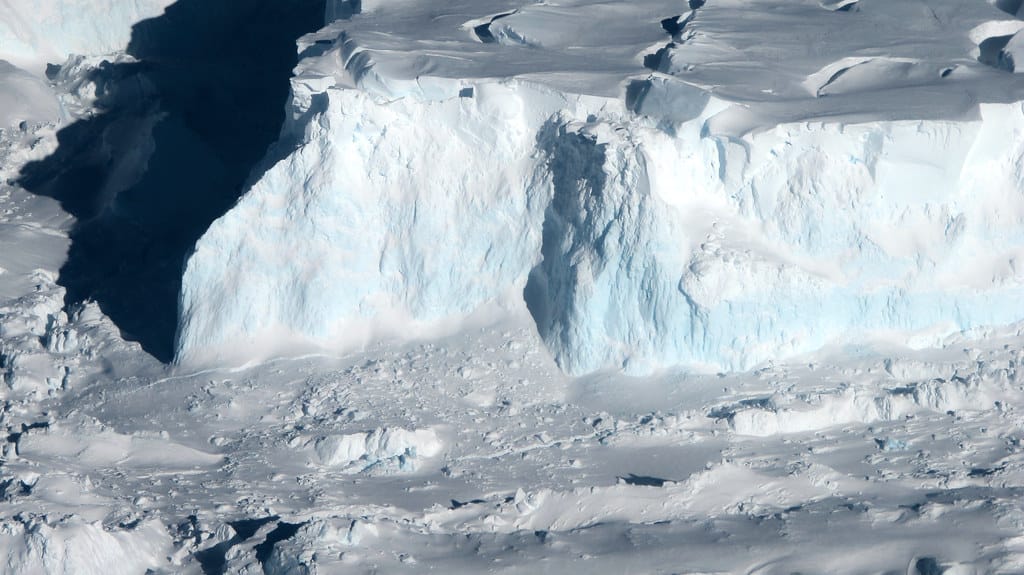Antarctica's Doomsday Glacier Melting 'Faster Than Thought,' Sparking Fears for Climate
A new study reveals that the Thwaites Glacier in Antarctica, also known as the 'Doomsday Glacier,' is melting at a rate faster than previously predicted.

Antarctica's Thwaites Glacier, ominously nicknamed the ‘Doomsday Glacier’ due to its potential to drastically raise sea levels, is disintegrating at an alarming rate beyond prior scientific predictions. This colossal glacier, comparable in size to Florida, is a critical component of West Antarctica's ice sheet, and recent findings suggest the situation is more dire than previously understood.
A study published in the Proceedings of the National Academy of Sciences (PNAS) on May 20, 2024, reveals that warm ocean water is penetrating several miles underneath the Thwaites Glacier, accelerating its melt. High-pressure seawater is infiltrating the glacier's base, a phenomenon that could lead to a much faster disintegration than scientists have anticipated.
The Significance of Thwaites Glacier
The Thwaites Glacier holds immense importance in global climate dynamics. Since the 1980s, it has been rapidly melting, contributing to a 4% rise in global sea levels and the loss of hundreds of billions of tons of ice. Should this glacier melt entirely, it could result in a sea-level rise of up to 2 feet (60 centimeters). However, the real catastrophe lies in its structural role: the glacier acts as a natural barrier, preventing surrounding ice from West Antarctica from sliding into the ocean. If Thwaites collapses, it could trigger a chain reaction, causing sea levels to rise by as much as 10 feet (3 meters).
Understanding the New Findings
Researchers utilized high-resolution satellite radar data, collected between March and June 2023, to obtain a detailed X-ray scan of the glacier. This advanced imaging technique revealed that the glacier's surface rises and falls by several centimeters as seawater filters in and out from beneath it. The warm seawater, traveling several miles under the glacier, progressively melts it from the underside, injecting fresh water into the ocean with each tidal retreat.
Christine Dow, a co-author of the study and a professor of glaciology at the University of Waterloo, Ontario, expressed concern over the findings: "The worry is that we are underestimating the speed that the glacier is changing, which would be devastating for coastal communities around the world." The infiltration of warm seawater indicates a much higher risk of accelerated melting and potential collapse, posing a significant threat to global coastal regions.
The Broader Implications
The implications of the Thwaites Glacier's rapid melting extend far beyond Antarctica. Rising sea levels threaten to inundate coastal cities, displace millions of people, and cause extensive economic damage. The glacier’s collapse could also disrupt global weather patterns, contributing to more frequent and severe storms, flooding, and other extreme weather events.
As coastal communities brace for the potential impacts, there is an urgent need for more comprehensive research and better predictive models. The study’s findings highlight the necessity for global cooperation in climate research and mitigation efforts. Governments, scientists, and organizations must work together to develop strategies to manage and mitigate the impending risks posed by the Thwaites Glacier and other vulnerable ice formations.
Looking Ahead
The path forward requires robust climate action and adaptation measures. Researchers like Christine Dow emphasize the importance of improving models and focusing research on critical glaciers to better understand the timelines and impacts of these changes. "At the moment, we don't have enough information to say one way or the other how much time there is before the ocean water intrusion is irreversible," Dow noted. "By improving the models and focusing our research on these critical glaciers, we will try to get these numbers at least pinned down for decades versus centuries."
In conclusion, the accelerated melting of the Thwaites Glacier is a clarion call for immediate and sustained climate action. The stakes are high, and the time for complacency is long past.
As the world grapples with this unfolding crisis, the urgency to address climate change and its myriad effects has never been clearer. The Thwaites Glacier serves as a stark reminder of the profound and far-reaching impacts of our warming planet.




